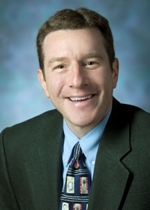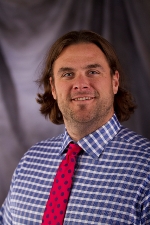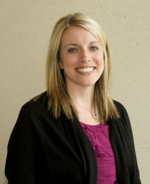
Nurse–pharmacist Teams Improve Medication Reconciliation
Optimal patient care is not a solo endeavor, but one that requires professional teamwork. That teamwork can reduce errors and lead to substantial savings, according to a new study from Johns Hopkins University. The study found that nurse–pharmacist teams are effective in identifying potentially harmful medication discrepancies before patients suffered from adverse drug events, which cost the healthcare system billions of dollars annually.

Leonard S. Feldman, MD, said physicians are becoming more comfortable collaborating with other professionals.
“For far too long we have been playing an individual sport when it comes to medicine, when it should be a team sport,” said study leader Leonard S. Feldman, MD, an assistant professor in the Division of General Internal Medicine at the Johns Hopkins University School of Medicine in Baltimore, adding that physicians have often tried to do it all, but that’s not the best way to get the best outcomes. “Having a collaborative effort with time designated to this important issue makes a lot of sense, and from our study it looks like it’s going to help people.”
Researchers studied 563 patients who had been admitted and released from the hospital. Physicians wrote admitting orders and took a medication history; within 24 to 48 hours, study nurses--with no special training and dedicated to the intervention--interviewed and compiled a list of each patient’s home medications. If the patient could not recall the drug or regimen, the nurse reviewed the electronic medical record to check for discharge orders from a previous visit or called the patient’s family, physician or pharmacist to track down the information, which was verified with the patient.
Then the nurse compared the list to the admission orders, created a list of discrepancies and consulted with a pharmacist about whether or not the differences were intentional. If unintentional, the nurse contacted the physician who could correct the mistake. At discharge, the nurse compared the home list to discharge orders and again reconciled discrepancies.
The team reported in the Journal of Hospital Medicine finding an unintentional discrepancy in 40 percent of the cases, and 72 percent of the discrepancies had the potential to cause moderate to severe discomfort or clinical deterioration.
“Discrepancies happen a lot,” Feldman said. “We intervened, and because we intervened, we cannot show that patients would have had worse outcomes. We can only theorize they would.”
The Interdisciplinary Nursing Quality Research Initiative (INQRI) of the Robert Wood Johnson Foundation in Princeton, N.J., funded the study. Lori Melichar, the program officer for INQRI, said interdisciplinary teamwork is important for problem solving, to create an understanding of what each profession can bring to a solution and integrate effectively into one’s workload. It funds studies that include nurses collaborating with other professionals.
Reconciliation through teamwork
The Joint Commission standards require medication reconciliation, but the accrediting body does not dictate how it is done. Various organizations have tried different methods, led by nurses, physicians or pharmacists, to improve the process. But this study found collaboration worked well.
“We really see it’s a win win for both professions,” Melichar said.

Andrew M. Roecker, PharmD, RPh, BCPS, said pharmacists and nurses need to work in the same continuum to allow better exchange of information.
Andrew M. Roecker, PharmD, RPh, BCPS, professor and chair of the department of pharmacy practice at Raabe College of Pharmacy at Ohio Northern University in Ada, called reconciliation a vital part of the provision of healthcare, which can reduce medication errors and readmissions and overall patient satisfaction.
“On admission, knowing what medications the patient is or is not taking allows us to narrow the differential diagnosis and provide appropriate care based on the patient's current status,” Roecker said. “On discharge, the plan can be further disseminated to the patient or caregiver to limit confusion with newly started or changed medications.”

John Klimek, RPh, said that patients’ recoveries can be improved when pharmacists work collaboratively with physicians and nurses.
Pharmacists working collaboratively with physicians and nurses can improve patients’ recovery, because of pharmacists’ knowledge of medications and how they work in the body, said John Klimek RPh, senior vice president for industry information technology at the nonprofit National Council for Prescription Drug Programs in Scottsdale, Ariz.
“It’s collaboration with the entire healthcare team,” Klimek said. “We want to bring down the silos.”
By communicating and working together, medication safety can be improved, added Anastasia Roberts, PharmD, assistant professor of pharmacy practice at St. Louis College of Pharmacy in St. Louis, explaining that pharmacists are able to offer expertise in optimizing medication therapy.
“Many institutions struggle with the medication reconciliation process due to limited resources,” Roberts said. “Physicians and nurses are often required to integrate this additional step in their already busy days.”
Making the financial case
The Johns Hopkins study had nurses dedicated just to medication reconciliation. Feldman says the detective work averaged roughly $32 per patient, and around $114 to find one discrepancy that could cause harm. Based on prior studies indicating an adverse drug event costs $9,300 to treat, preventing one discrepancy in every 290 patient encounters would offset the intervention costs. The Hopkins group believes the nurse pharmacist teams might be able to prevent more than 80 adverse events for every 290 patients admitted, an intervention that would easily pay for itself and help many people.

Anastasia Roberts, PharmD, indicated pharmacists and nurses can collaborate in a variety of ways to prevent medication errors. Photo credit St. Louis College of Pharmacy.
“This study model would require additional nursing and pharmacy staff,” Roberts said. “While the study calculated the estimated cost to be $32 per patient, the hospital would still need to hire new employees or shift responsibilities from current employees. The model could easily be replicated if a hospital is able to allocate the necessary resources.”
Feldman agrees a hospital implementing the model may need to hire more nurses, but not more pharmacists who consulted only when the nurse identified a discrepancy.
“But if they are able to decrease the number of adverse drug events, which result in higher costs for the hospital and readmissions, hopefully, it would pay for itself,” Feldman said.
While Feldman said “the nurses did a great job with this,” he plans to investigate whether using pharmacy students, who would cost nothing, might produce similar results.
“These adverse drug events and unintended discrepancies happen frequently,” Feldman concluded. “If we are able to intervene, we may be able to save the patient from harm, improve their clinical outcome, and save the institution and system money at the same time.”


